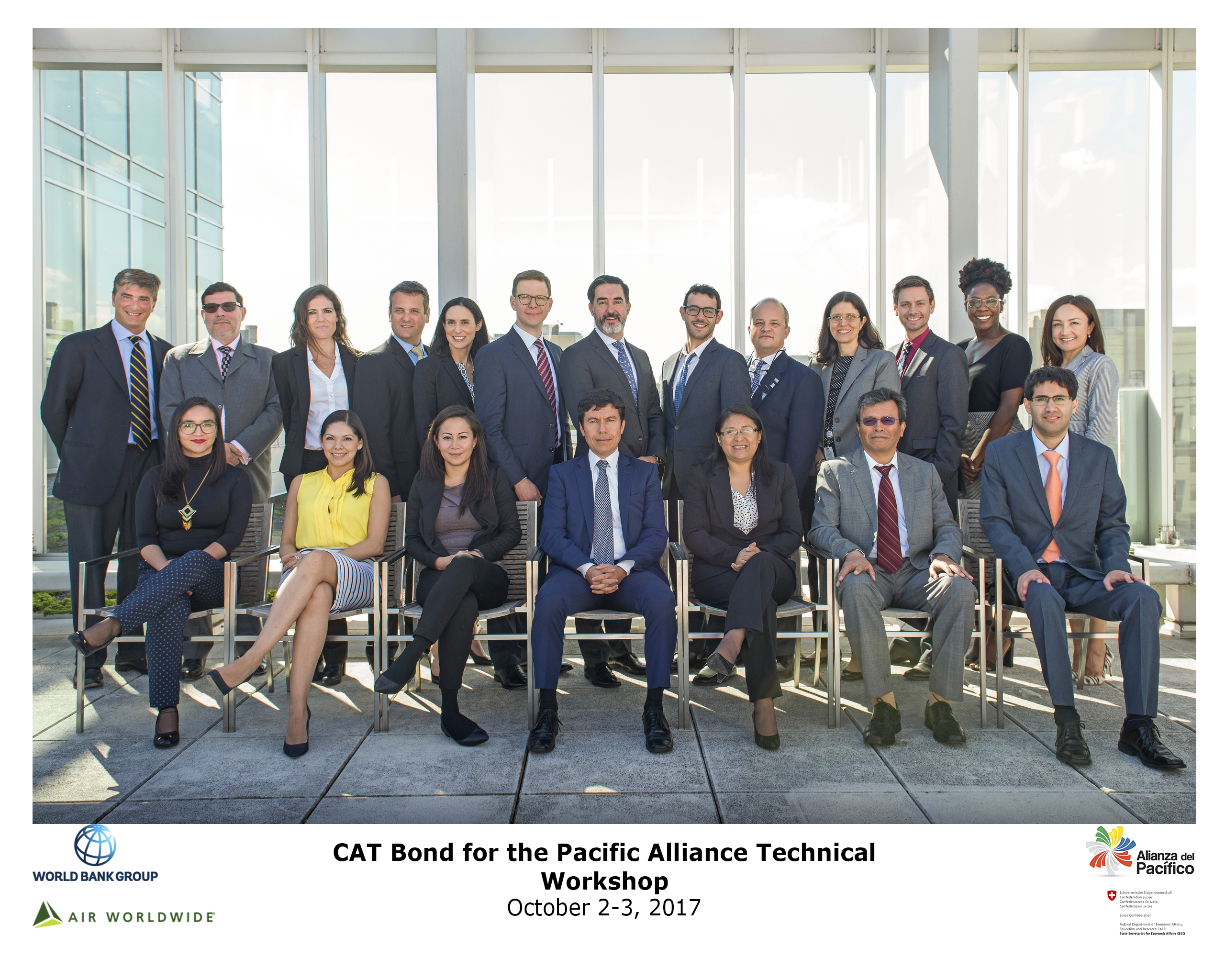DRFIP Co-hosted the Pacific Alliance CAT Bond Technical Workshop

From October 2 to 4, the Pacific Alliance Catastrophe (CAT) Bond Technical Workshop brought together member countries of the Pacific Alliance - Chile, Colombia, Mexico and Peru.
The members reviewed the results of the reports generated during the preparatory technical assistance phase for issuing a joint Catastrophe Bond and used this workshop to fine-tune the parameters needed to move to the structuring phase of the potential CAT Bond. This is the first time that multiple countries come together to issue a joint CAT bond that covers seismic risk, providing access to immediate liquidity following an earthquake. This has been in the works since 2015, with the technical support provided by the World Bank Group.
The workshop was led by the Disaster Risk Financing and Insurance Program (DRFIP) in collaboration with World Bank Treasury as part of the World Bank Group's technical assistance to the Pacific Alliance. DRFIP's technical support is funded by the State Secretariat for Economic Affairs: SECO through the SECO Single Donor Trust Fund on Sovereign Disaster Risk Financing Insurance for Middle Income Countries. SECO supports Colombia and Peru as SECO countries.
This workshop and technical assistance is part of long term engagement, since 2011, with these countries under the SECO Multi Donor Trust Fund.Both countries are attained several milestones, like the enactment of their own DRFI Strategy, and currently are working on its implementation, being the CAT-bond a complement for their current instruments to finance natural disasters.
Key Outcomes from the workshop include:
- Finalizing next steps for issuing the CAT bond: The four member countries of the Pacific Alliance agreed on key decisions and timeline with the official target to issue the CAT Bond in January (previously February was considered). The key next steps are
- The"soft mandate" from the countries to the Bank, requesting a non-binding agreement to request the Bank's support to approach the market; the soft mandate is expected from each country by October,6, 2017.
- The "hard mandate" is expected, within the next 4-5 weeks - before this is issued, it is expected that there is clear understanding on all sides on the roles which will be played by different stakeholders, and the urgent, specific support that will be required (e.g. country-level approvals, signatures, and technical documentation provided by the Bank team)
- Technical clarifications were resolved: Country representatives could resolve technical questions and concerns with all the participating World Bank teams that were represented (DRFIP from Finance and Markets GP, Banking, Markets, Legal, Debt Management. Participants thanked the team for the opportunity to have direct, frank dialogue and their immediate responses to solve pending questions. In addition, participants had the opportunity to meet with the WB Treasurer to express any specific support they may require, especially in advance of the Annual Meetings with arrival of their respective Ministries of Finance.
- Knowledge Exchange: Three of the four countries delegations participated in technical video interviews, conducted by WBG Treasury in collaboration with DRFIP.
- On behalf of Pacific Alliance(PA), Colombia will release a "declaration" outlining the key takeaways from this workshop. This which is standard protocol anytime members of the PA meet. This will be done by the PA (and not as a WBG communications product).
- On behalf of the World Bank Group, Treasury and DRFIP are working on an external story to explore the impact of the WBG's long-term engagement with the PA and significance of the TA.
The Disaster Risk Financing and Insurance Program (DRFIP) is a joint program of the World Bank's Finance & Markets Global Practice and the Global Facility for Disaster Reduction and Recovery (GDFRR). DRFIP has provided advisory services on disaster risk financing and insurance to more than 60 countries worldwide. The program works along four priority areas to support four main beneficiary groups governments, farmers, homeowners and SMEs, and the poorest and most vulnerable.